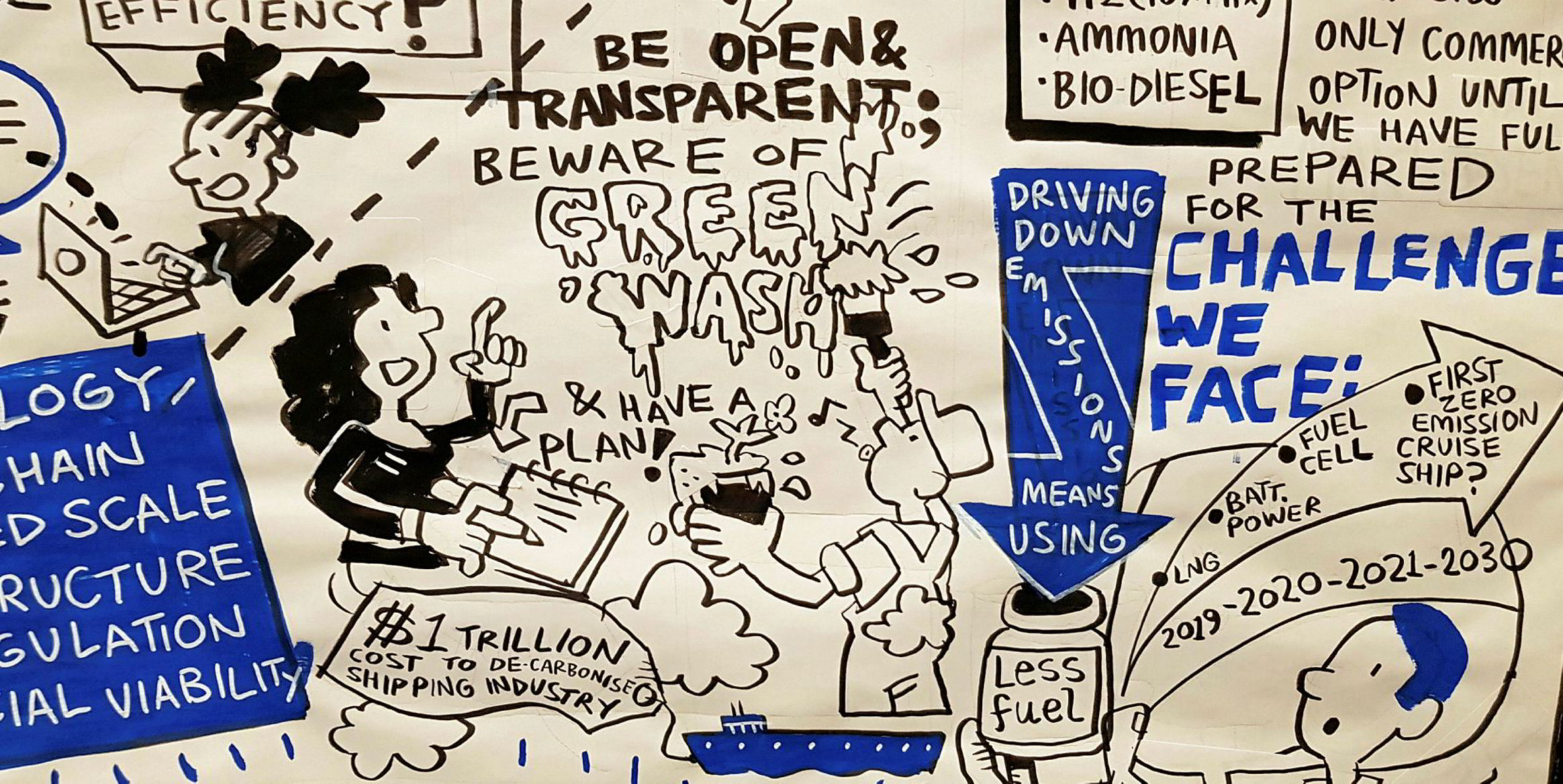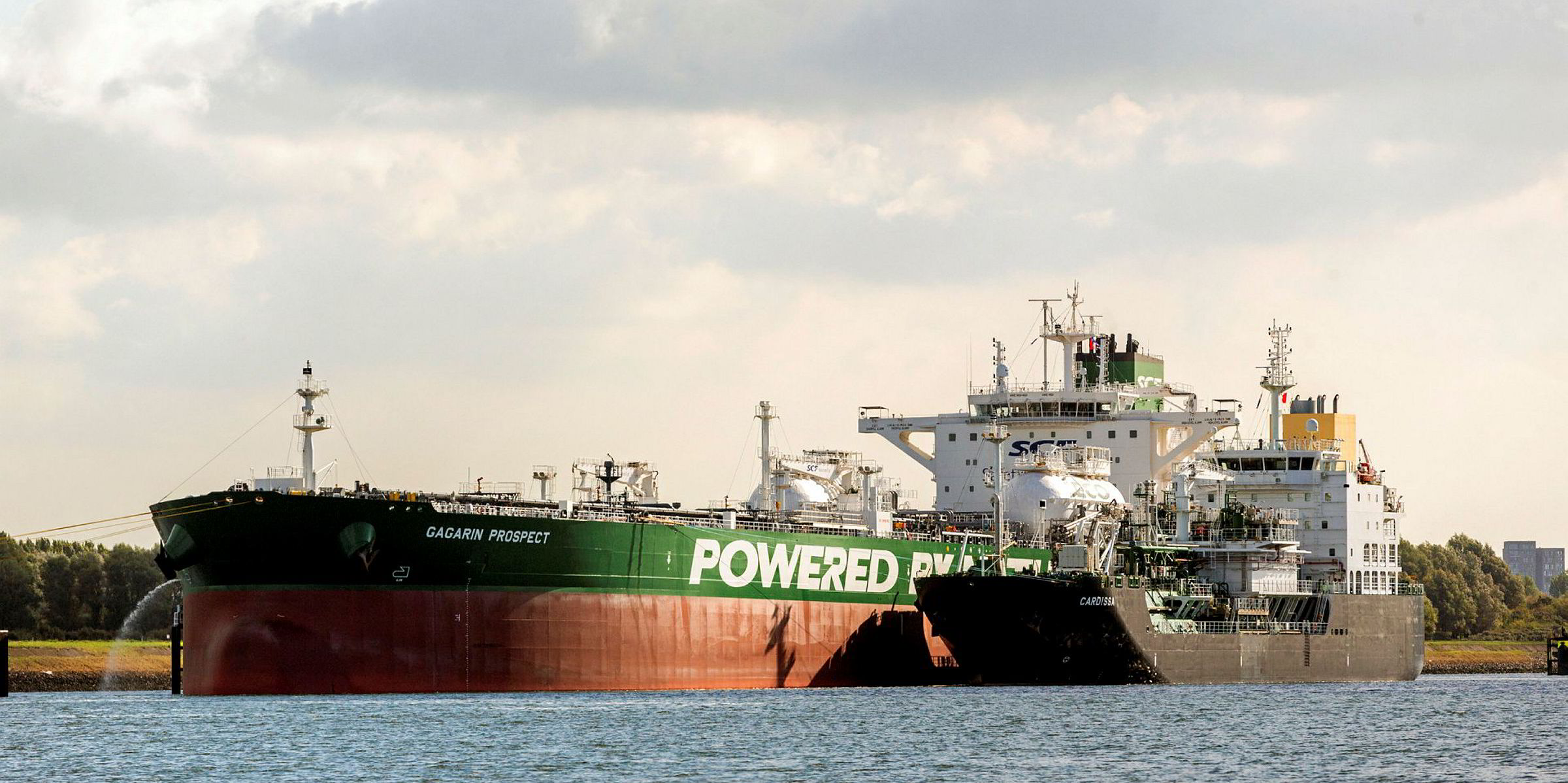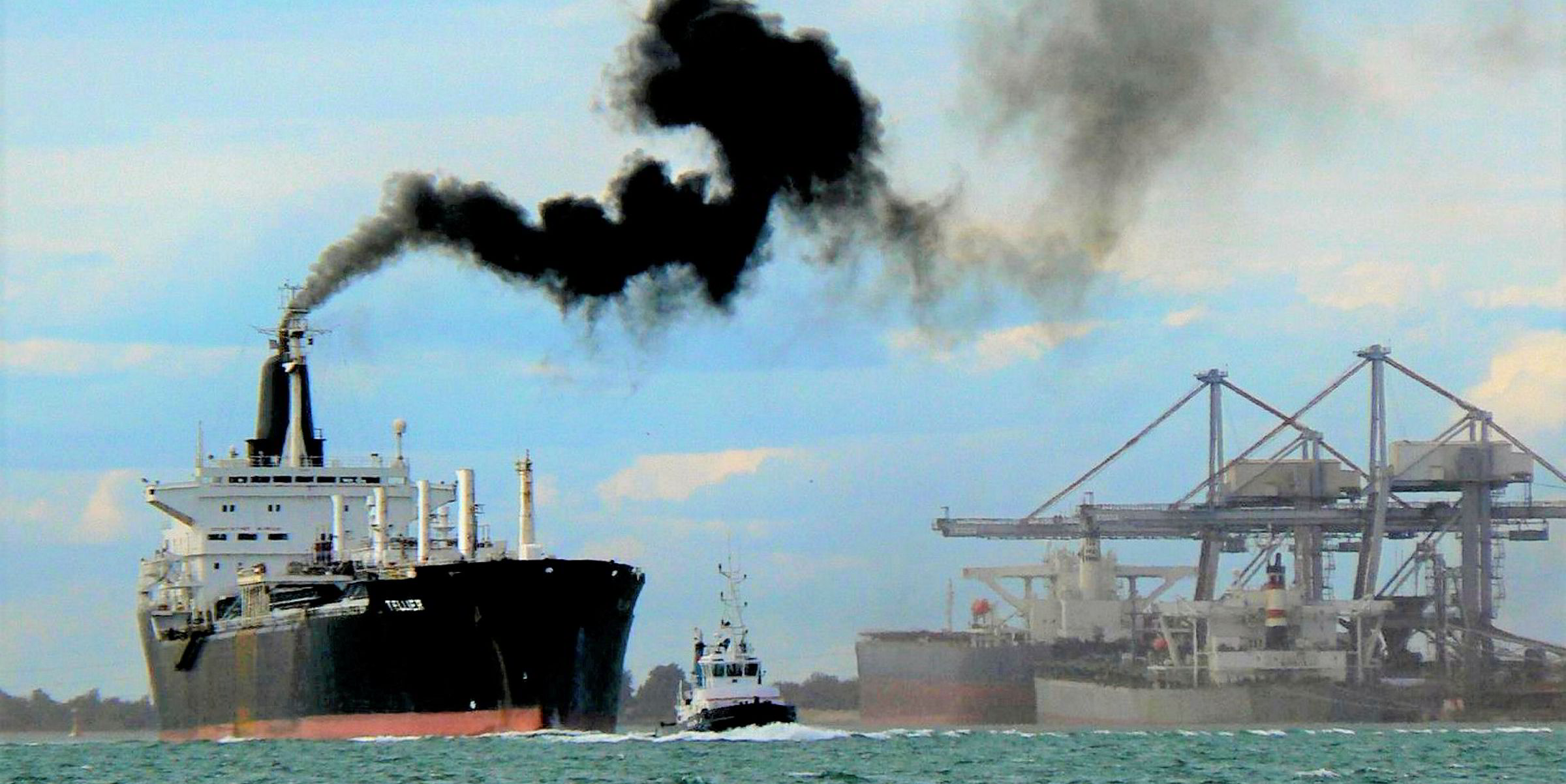Shipowners who delay fuelling decisions as they await a silver bullet solution to meet the IMO 2050 CO2 reduction targets risk the industry missing those goals — when LNG could start that decarbonisation process today.
That was the message from Mark Bell, general manager of the Society for Gas as a Marine Fuel, at the IQPC Global LNG Bunkering Summit 2020 in Amsterdam.
Speaking on the sidelines of the event, Bell told TradeWinds: “We are not telling anyone what to do. But a decision to wait is a decision not to hit that 2050 target — and that is likely to mean regulation.”
LNG fuelling has started to gain real traction on infrastructure build out and newbuilding uptake just as the call to cut global CO2 emissions has intensified, and feelings were running high at the event among some early adopters of LNG as a marine fuel.
'LNG bashing'
Promoted to the shipping industry as a clean fuel that cuts NOx, SOx and particulates to almost zero, LNG also reduces CO2 emissions by up to 20%. But it is still a fossil fuel and fresh questions are being asked about the extent of methane emissions in its upstream supply chain.
As such, LNG is now coming in for what one delegate described as a serious "bashing”.
For some of those building the case for LNG, this creates an uncomfortable — at times frustrating and, for others, apparently perplexing — situation.
The unease was palpable at the conference, which has seen a surge in delegates this year as the LNG bunkering sector has started to see some tangible growth.
“Confusing”, “annoying” and just simply “dangerous” was how attendees described some of the negative reports about LNG’s methane emissions and the push to find a marine fuel that will meet the IMO 2050 target of a 50% cut in CO2 emissions.
Their point is this: the increasing focus on 2050 targets and future fuels that may be able to meet them, is delaying owners from taking decisions on their next generation of ships — when there is a cleaner fuel alternative available that could start cutting CO2 and other pollutants now.
UCL Energy Institute associate professor Tristan Smith joined a session at the event where he thanked panel chair Paul Taylor, Societe Generale managing director and global head of shipping and offshore, for casting him as “the pantomime villain”.
You may be facing a situation where LNG is the Blu-ray of the marine fuelling market
Tristan Smith


Smith said he does not dispute that LNG could take a larger share of the marine bunker market over the next 10 years.
But he said the shipping industry needs to see zero-emission fuels coming in from 2030, and that while his team is agnostic on what this might be, their data shows that the most economically competitive fuel is ammonia.
Other panel members, including Carnival Corp senior vice president for maritime affairs Tom Strang and Lloyd's Register global gas segment manager Panayiotis Mitrou, voiced concerns about the ability and cost of building out shore-based infrastructure to supply ammonia, along with the risks involved in handling and distributing the product.
The UCL academic agreed that this will need huge amounts of capital but said he suspects that pressure from the IMO and commercial customers will produce early adopters who will be running on ammonia by the late 2020s.
Using a graph showing the rise and fall in the consumption of competing forms of video as a metaphor, he told delegates: “You may be facing a situation where LNG is the Blu-ray of the marine fuelling market.”
Smith urged shipowners: “Be honest and have a plan.”
TradeWinds encountered one shipowner who was doing just that, sitting with an early adopter of LNG fuel and taking notes. “Owners have to do their research,” he said.
Taking the LNG ticket
Others have committed to LNG as a marine fuel. Furetank managing director Lars Hoglund, who operates several LNG-fuelled ships and has two more newbuildings on order, advises owners to take the LNG fuelling ticket.
He does not rule out using different fuels such as ammonia in the future, but he said that when Furetank’s two 2003-built and 2004-built ships come up for renewal in the next two to three years, the choice will still be LNG.
Bell said he is commonly asked about the slow uptake of LNG as a marine fuel but he added that there is so much uncertainty about what the perfect fuel is that owners cannot make a decision.
“I think it is important to have these discussions now,” he added, “but don’t throw the baby out with the bath water.”








